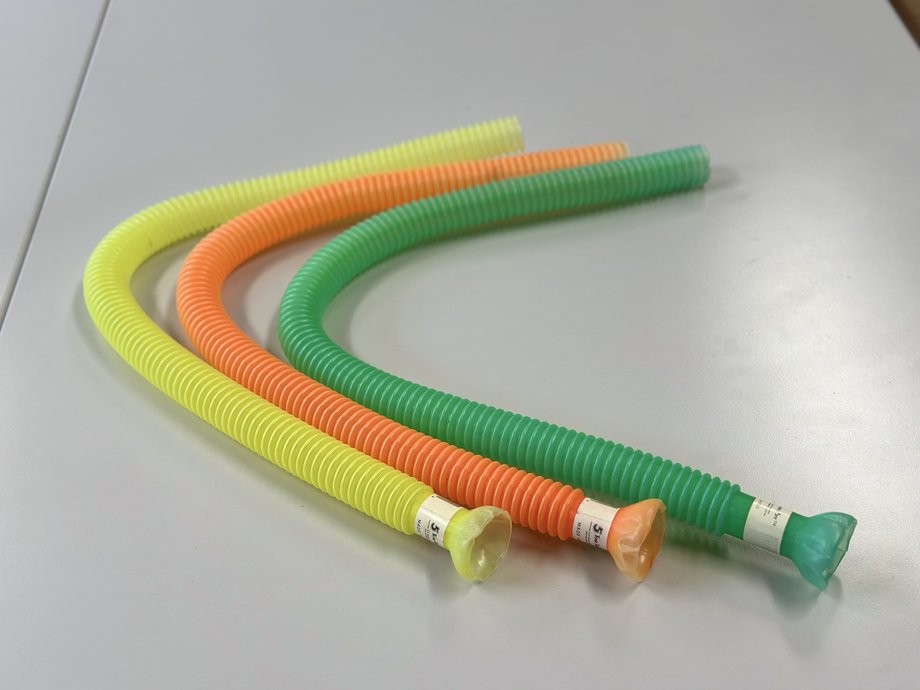Tone Twirling Pipes Crying tubes
The crying tubes are not only extremely popular with children, but also offer a wide range of applications that fund learning and experimentation. They are made of ribbed plastic and are available in bright colours. Simply whirl the tube through the air and a howling sound is emitted. The speed of the whirling changes the sound - the faster you spin, the louder and higher the tube "howls". The howling hoses can also be used as marble runs or pipelines and are ideal for experiments with water. They can even be used as a telephone: Speak quietly into one end and listen at the other. The howling tubes are therefore ideal tools for funding creativity, fine motor skills and physical understanding.
We offer a total of three Tone Twirling Pipes for loan from the Laboratory for Didactics and Methods.
Age recommendation
Children aged 5 to 12 years (in this age group, the children are able to understand the physical principles behind the sounds produced and use the twirling pipes in a variety of ways)
Number of participants
Each howling tube can be used by one child alone, but they are also great for group activities with up to 6 children where they can experiment and play together.
Place
To use the howling tubes, you need a room with enough space to swirl the tubes safely through the air. An open space of around 3x3 metres is ideal to ensure that the children have enough freedom of movement.
Set-up and procedure
- Introduction: It is advisable to start with a short introduction to explain to the participants how the howling tubes work and what sounds they can produce through different movements.
- Warm-up exercises: Participants can now do some simple warm-up exercises to loosen up their arms and shoulders. This prepares them for twirling the tubes.
- Experimentation phase: The participants can now try out the hoses and experiment with different speeds and circular movements. Specific tasks can also be set, such as making certain sounds or using the tubes as a marble run or water pipe.
- Co-operation exercises: Participants can also be encouraged to use the tubes as "telephones" and pass messages to each other. This strengthens communication skills.

